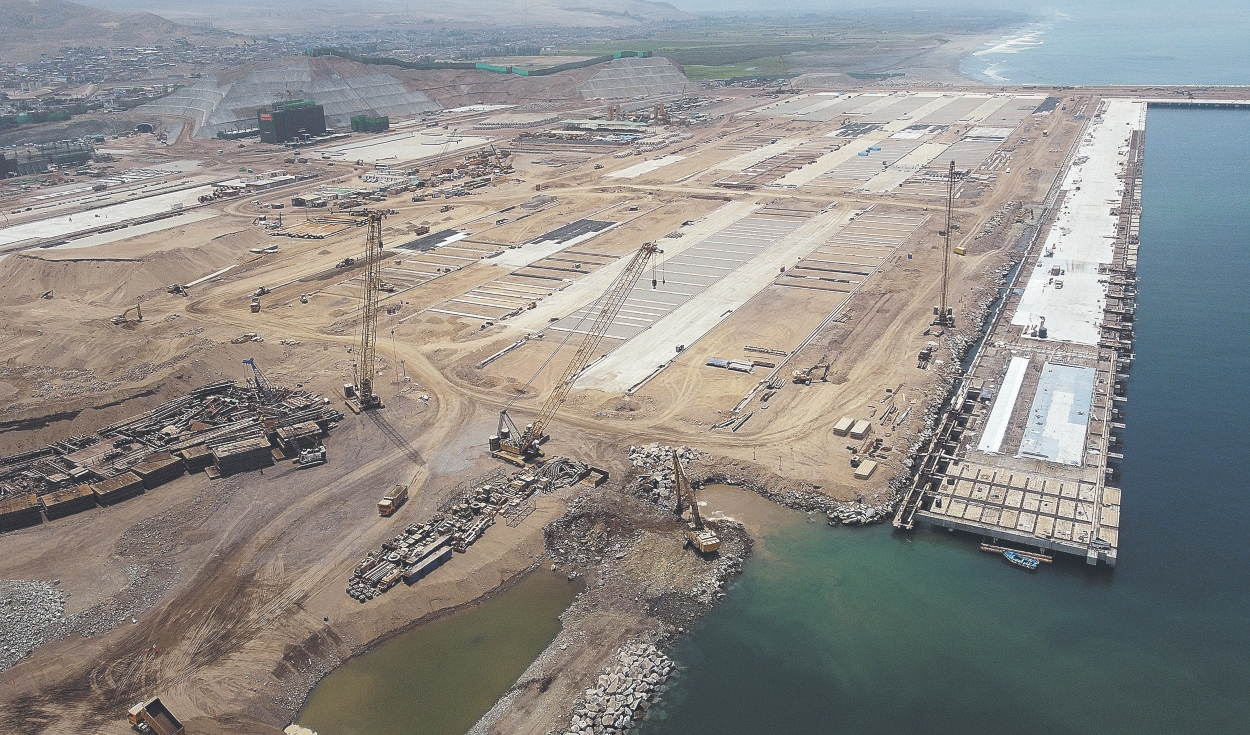
The current operators of ports concessioned in Peru will have the possibility of extending their contracts for up to 30 additional years, after negotiation with the Peruvian State, after the Plenary Session of the Congress of the Republic approved the modernization of the National Port System Law , in the midst of the controversy between the company Cosco Shipping and the Ministry of Transport and Communications (MTC) over the exclusivity of its services in Chancay.
The device equalizes the conditions under which a port is negotiated to the concession framework offered to the private sector in public infrastructure works and public services (such as roads and airports), which establishes a maximum validity period of 60 years.
At this time, there are seven concession terminals throughout Peru for a period of 30 years: Matarani (Tisur, 1999), Muelle Sur del Callao (DP World, 2006), Paita (TP Euroandinos, 2009), Concentrate Shipping Terminal of Minerales del Callao (Transportadora Callao, 2011), Muelle Norte Multipropósito del Callao (APM Terminals, 2011), San Martín (TP Paracas, 2014), and Salaverry (STI, 2018).
Fujimorism prepares coup de grâce to the ONP
These seven terminals concentrate 99% of the country’s TEU cargo and 48% of the cargo in tons (they have exceeded 50 million metric tons annually), after, together, they adopted investments of more than US$2,084 million, over a committed horizon of US$3,423 million (an advance of more than 60%).
Both the Supervisory Body for Investment in Public Transport Infrastructure (Ositrán) and the MTC were in favor of the approval of the standard, which does not respond to an automatic renewal, but will first have to go through a negotiation process. with the Peruvian State. If the addendum is not successful, a new contest is launched through Proinversión.
Key infrastructures
A recent study by Macroconsult reveals the high impact of concessioned ports in Peru. In 2022, the concessioned port terminals have transferred US$175 million in taxes and US$34 million in payments in favor of the State.
Furthermore, due to the services offered and the investment made in port concessions, on average, 37,000 jobs are generated annually, which represents 0.22% of the employed EAP.
The Association for the Promotion of National Infrastructure (AFIN) explains that, except for Chile, the rest of the countries have contracts that exceed 30 years (in the case of Colombia and Panama, extensions of up to 20 years are contemplated, and may have more of 30 years in practice). ComexPerú also supported the initiative.
“It can be renewed for five, ten or twenty years, that depends on what is agreed with the grantor regarding the investment plan that is previously established, it is not automatic,” said AFIN for La República.
Another story begins for the ports
Cosco Shipping hopes that the other changes to the port law, regarding the exclusivity of services, will also allow it to settle the controversy with the APN.
Another norm recently approved by Congress in favor of the port sector is the new cabotage law, which will allow transshipments between ports on the same Peruvian coast with international flag ships.
92% of the country’s foreign trade is carried out through ports. The Peruvian port system is made up of 60 port terminals, of which 14 are for public use and 46 for private use.
Source: Larepublica
Alia is a professional author and journalist, working at 247 news agency. She writes on various topics from economy news to general interest pieces, providing readers with relevant and informative content. With years of experience, she brings a unique perspective and in-depth analysis to her work.











